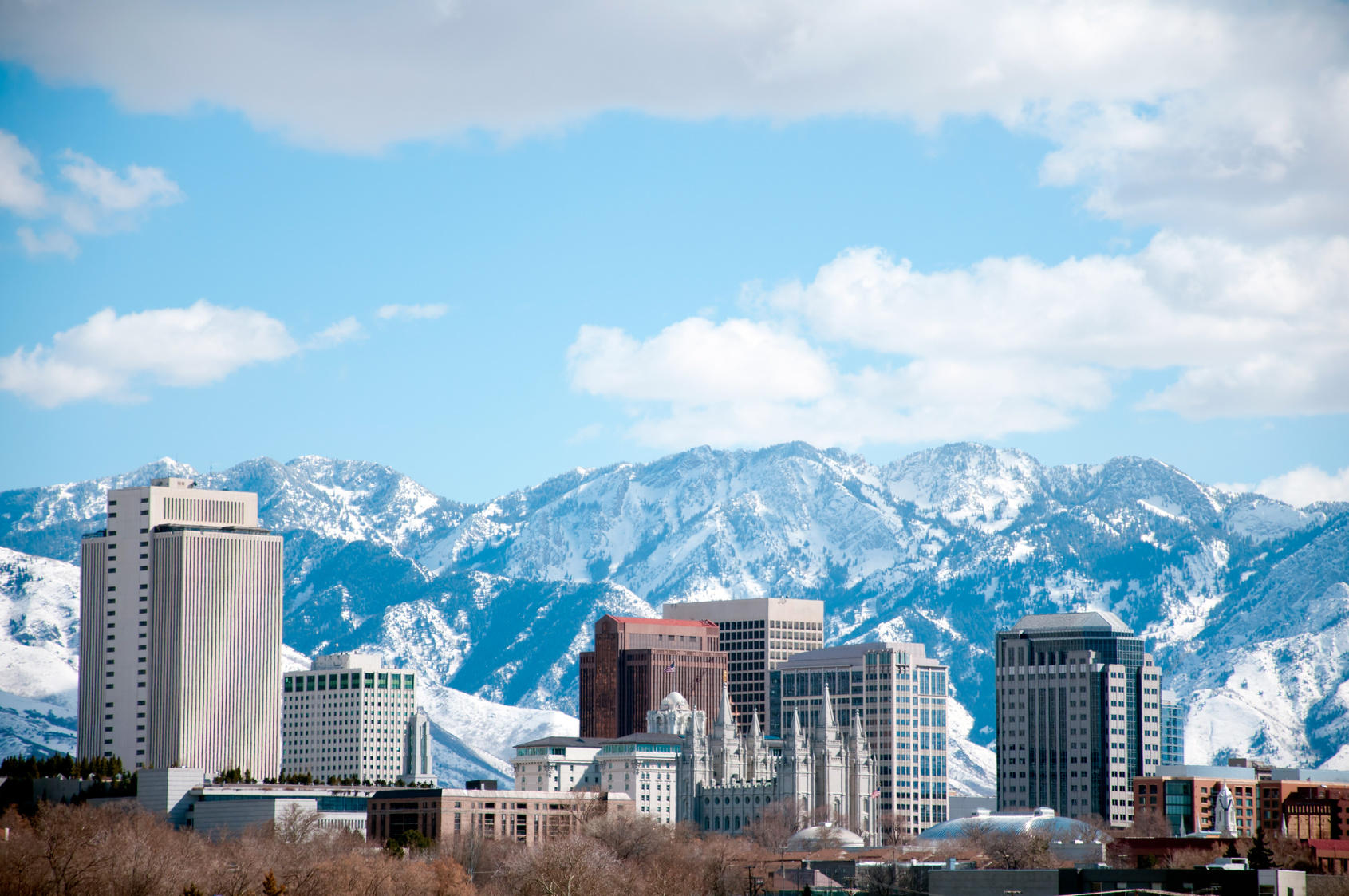Salt Lake City, Utah
Salt Lake City is the capital of Utah and the state’s largest city, with roughly 200,000 residents and located within a metro area of more than 1.2 million people. Salt Lake City has long been a leader in environmental action and is committed to achieving an 80% reduction in greenhouse gas (GHG) emissions by 2040. The region is experiencing rapid growth as it attracts new residents and businesses from across the United States, which presents both opportunities and challenges for reducing building emissions.
Many of Salt Lake City’s efforts have focused on improving air quality while also reducing GHG emissions. The region’s rapid growth combined with its geography presents significant air quality challenges, and for a number of years Salt Lake County and other areas of Utah have been unable to meet federal clean air standards. To help counteract these issues, the City has moved forward with policies and programs to reduce air pollution and GHG emissions, including investments in electric vehicle charging infrastructure and local solar installations. In addition, the Community Renewable Energy Act was passed in the state of Utah in 2019 as a result of the City’s successful advocacy, which sets Salt Lake City and other local governments in the state on course to achieve net-100% renewable electricity for their entire communities by 2030.
To continue its progress, Salt Lake City has focused on reducing air pollution and emissions from fossil fuels burned in its buildings. BEI worked with Salt Lake City on these efforts between 2019-2023. In 2019, BEI helped the City analyze and identify cost-effective opportunities for electrifying space heating and hot water in both existing and new residential buildings. In 2021-2022, BEI commissioned a follow-up study by the energy engineering firm E3 to study the economic impacts of all-electric new construction throughout Utah. The study found lifecycle financial savings associated with new all-electric residential buildings across every climate zone in the state when compared to mixed fuel construction that includes natural gas. Given these positive economics, in 2023 staff from BEI, Salt Lake City, and local nonprofit Utah Clean Energy are focusing on engaging affordable housing providers to catalyze heat pump deployment–many of whom are already building all-electric voluntarily given the cost reductions and air quality benefits.
Building on these analyses, BEI worked with the Salt Lake City and Utah Clean Energy teams to submit an “electric ready” code proposal to the Utah Uniform Building Code Commission in late 2021 that would require sufficient electrical capacity and wiring for all new buildings in the state to allow for future electrification. The proposal received a positive recommendation from the Utah Uniform Building Code Commission's Technical Advisory Committee in early 2022, but was tabled by the full Commission in late summer 2022. Salt Lake City and Utah Clean Energy continue to work toward passage of an updated code proposal that will encourage electrification in new buildings.
In 2023, BEI supported Utah Clean Energy and Salt Lake City with research and recommendations on readying the workforce of the Greater Salt Lake City region for increased demand for heat pump installation that are expected as a result of unprecedented investments from the federal Infrastructure Investment and Jobs Act and Inflation Reduction Act. Salt Lake City and Utah Clean Energy have used BEI’s assessment to work with regional and state-level stakeholders to apply for federally-funded workforce development programming that will help prepare the region for the growing demand for workers in this field and empower new talent and entrepreneurship in the heat pump sector.


